Washing machine for the countryside: description, types, features of choice
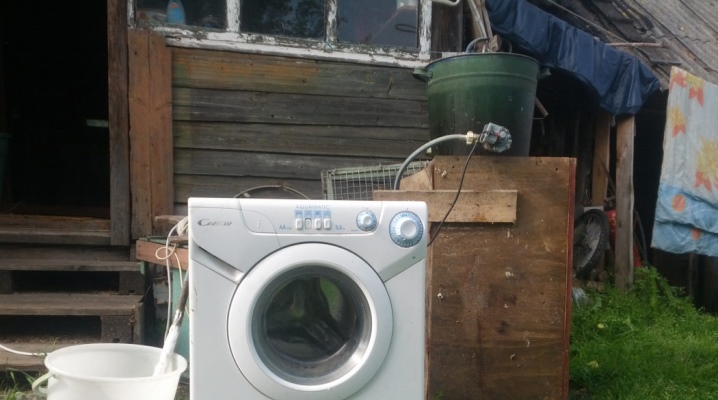
Unfortunately, in many villages and villages of our country, residents provide themselves with water from wells, their own wells and public water pumps. Not even all houses of urban-type settlements are equipped with a centralized water supply system, not to mention the villages that are far from all highways - both road and water supply or sewage. However, this does not mean that people in rural areas do not use washing machines. But only the choice here until recently was not too wide: either a simple model or a semiautomatic device, which does not necessarily require a connection to the water supply.
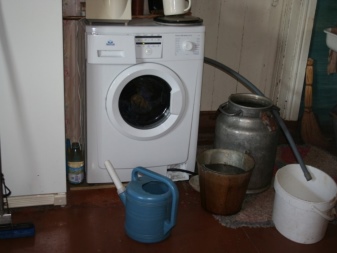
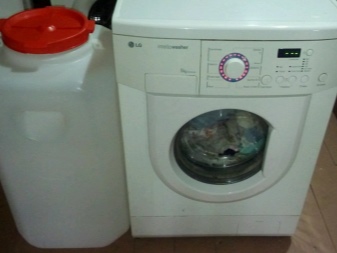
Description
Models of washing machines for the village provide for the fact that there is no running water in a residential building, so they have an open layout for loading laundry and filling with heated water manually. Dirty water is also drained manually into any suitable container: buckets, tank, basin. This is how most simple options for hand-spinning washing machines are arranged.
Models of semiautomatic machines can also be filled with water manually, but they have the functions of heating water and spinning the laundry. That's why such models for a private house in a village without running water are most widely used.
They consist of two compartments: in one of them the laundry is washed, in the other - it is spinning. Of course, washing in a semiautomatic machine is also a rather time-consuming process, but still not the same if you wash and wring out the laundry by hand.
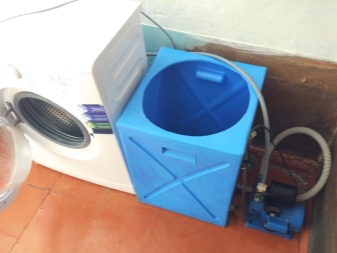
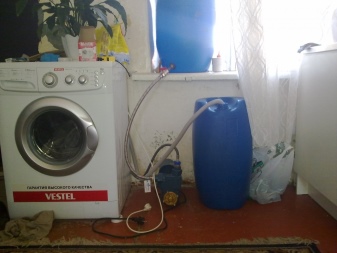
Besides, now they have found a way that allows, if there is electricity in a private house without running water, to wash even with an automatic washing machine... But for this you need to create a source of water to fill it with a little pressure. And also on sale there are models of machines with built-in water tanks, which solve the problems of washing in rural areas or in the country.
But we will talk about this a little later in the text. The advantages of an automatic washing machine over other models are obvious - the whole washing process takes place without human intervention. The only thing that needs to be done is to load the dirty laundry and turn on the desired washing mode with the button, and after turning off the machine, hang up the wrung out laundry for final drying.
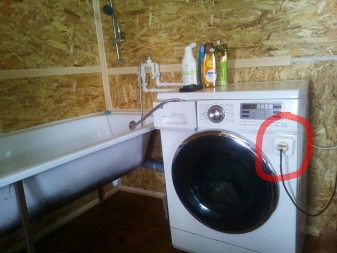
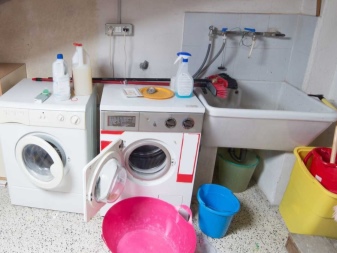
Views
As we found out, for a village where there is no running water, the following types of washing machines are suitable:
- simple with hand spinning;
- semiautomatic machines;
- automatic machines with a pressure tank.
Let's take a closer look at these types.
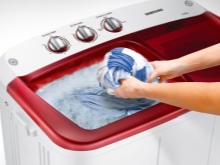
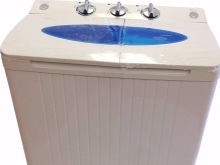
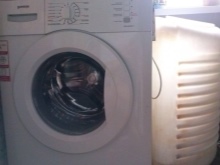
Simple with hand spin
This group includes activator machines with the simplest action, for example, small washing machine "Baby"... It is quite popular for washing in dachas and in families of 2-3 people. Consumes electricity to a minimum, water is also needed a little. And its cost is available to every family. This can also include another small-sized model called "Fairy"... Option for larger families - model of the activator machine "Oka".
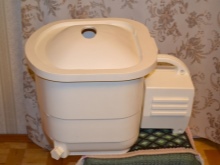
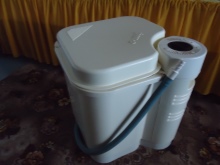

Semi-automatic
These models consist of two compartments - for washing and spinning. In the wringing compartment there is a centrifuge, which wringes out the laundry. The spin speed in simple and cheap machines is usually no more than 800 rpm. But for rural areas this is enough, since the hanging of the washed laundry there usually takes place in the fresh air, where it will dry out very quickly. There are also high-speed, but more expensive models. We can name the following models of semi-automatic machines that are in consumer demand of rural residents:
- Renova WS (you can load from 4 to 6 kg of laundry, depending on the model, spinning over 1000 rpm);
- "Slavda Ws-80" (loading up to 8 kg of linen);
- Fairy 20 (baby with a load of 2 kg and spinning up to 1600 rpm);
- Unit 210 (Austrian model with a load of 3.5 kg and a spin speed of 1600 rpm);
- "Snow White 55" (has a high quality wash, has a pump for pumping out dirty water);
- "Siberia" (there is a possibility of simultaneous functioning of washing and spinning).
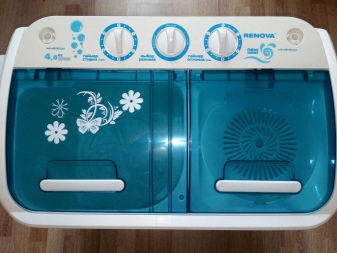
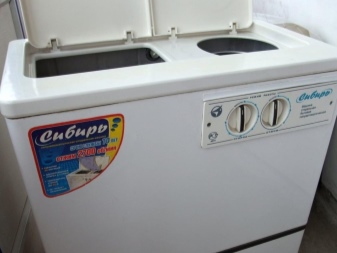
Water tank vending machines
Previously, in rural areas without running water, they did not even think about getting an automatic machine for washing clothes. Today there are automatic models that do not require a connection to the water supply. - they are equipped with a built-in tank that holds up to 100 liters of water. This amount of water is enough for several washings.
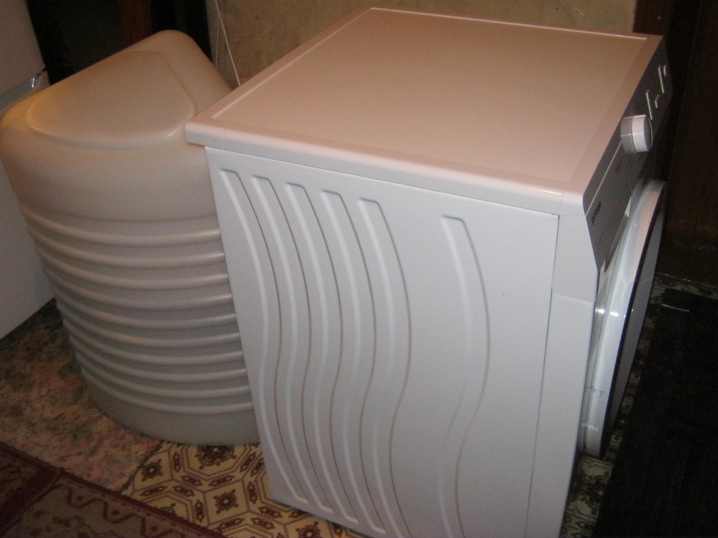
The principle of operation of such machines is similar to standard washing machines and functionally they are no different. When such a machine is connected and the washing mode is set, the loading chamber starts automatically filling with the laundry with water from the built-in tank., and then all stages of the process are carried out - from heating the water to spinning the washed laundry without any human intervention.
The only disadvantage of these models for summer cottages and houses in rural areas without running water is to manually fill the tank with water as it is consumed. In addition, in cases where it will be possible to connect the automatic machine to the water supply, it will not be possible to directly mount the water supply to the loading chamber.
We'll have to use the same scheme: first fill the tank, and only then wash the laundry in automatic mode. Automatic machines of this type from Bosch and Gorenje are especially popular in Russia.
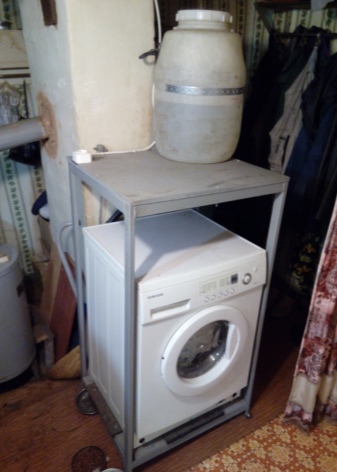
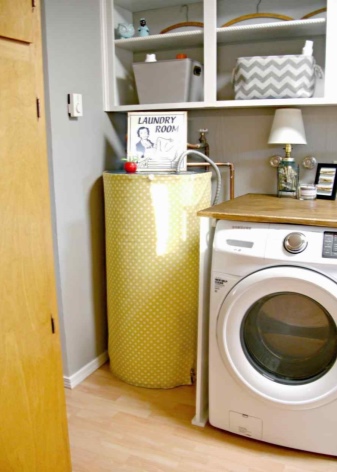
Features of selection and installation
When choosing a washing machine model for your home, consider the following points:
- the frequency and volume of washing - this will help in choosing the parameter of the optimal load of the machine;
- the dimensions of the room in which you plan to install the washing machine - from this we can conclude about buying a narrow or full-size model;
- energy consumption class (models of class "A" are considered more economical in terms of electricity and water);
- spin speed (relevant for automatic and semiautomatic devices) - try to choose an adjustable speed of at least 1000 rpm;
- functionality and ease of control of washing and spinning modes.
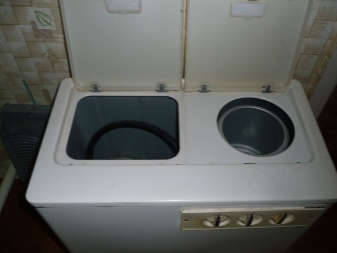
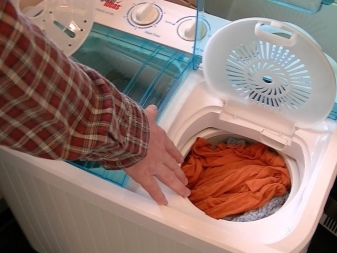
Installation of automatic washing machines and semiautomatic devices is not a complicated operation. Necessary:
- thoroughly study the instructions to avoid mistakes;
- install the equipment on a level place and adjust its horizontal position by rotating the legs;
- remove the transport screws, which are usually located in the recesses of the rear wall;
- install a drain hose, if there is one in the kit, and if there is no sewage system in the house, bring the drain through an additional hose to the street;
- in an automatic machine, if there is a filling valve, it must be installed on the tank in a vertical position and a hose from a water source must be connected to it.
After installing and installing the necessary connections, you can connect the unit to the electrical network, fill the tank with water and carry out a test wash without laundry.
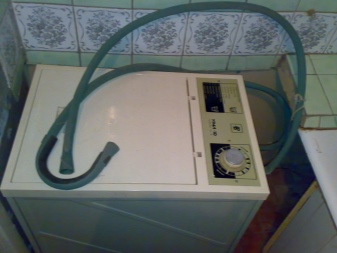
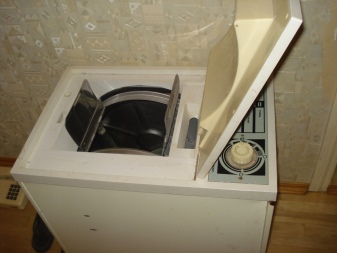
The device and operation of the WS-40PET semi-automatic washing machine in the video below.













The comment was sent successfully.